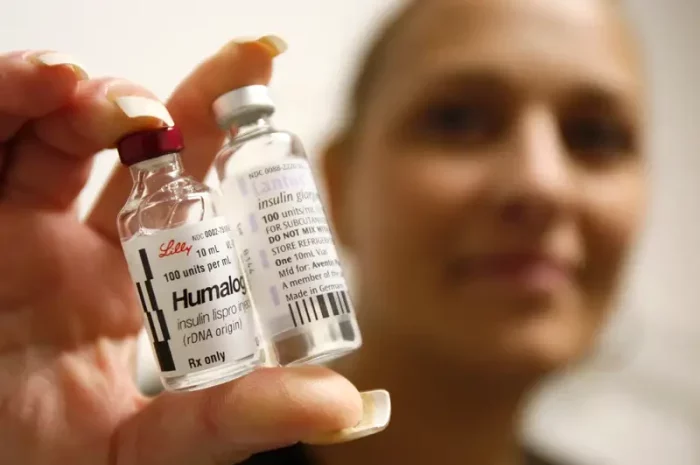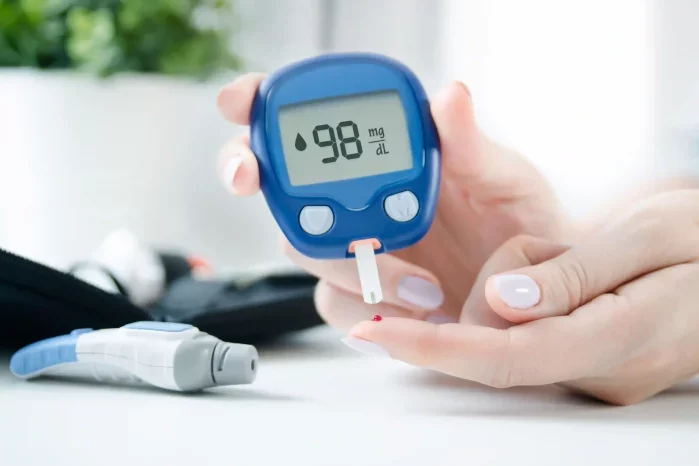Introduction to Type 1 Diabetes
Type 1 diabetes, formerly known as juvenile diabetes or insulin-dependent diabetes, results from an autoimmune reaction in which the body’s immune system mistakenly attacks and destroys insulin-producing beta cells in the pancreas. This autoimmune destruction leads to a deficiency in insulin production, disrupting the body’s ability to regulate blood sugar (glucose) levels effectively.
Unlike type 2 diabetes, which can often be managed through lifestyle modifications such as diet and exercise, type 1 diabetes requires lifelong insulin therapy. The exact cause of the autoimmune response that triggers type 1 diabetes remains unclear, although genetic predisposition and environmental factors are believed to play significant roles.
Key Symptoms of Type 1 Diabetes
The symptoms of type 1 diabetes typically develop rapidly over a short period, often within weeks. Recognizing these symptoms is critical for early diagnosis and intervention. The hallmark signs and symptoms of type 1 diabetes include:
- Polyuria (Frequent Urination): Individuals with type 1 diabetes often experience frequent urination, particularly during the night (nocturia). This occurs because excess glucose in the bloodstream leads to increased urine production as the kidneys work to eliminate the excess sugar.
- Polydipsia (Excessive Thirst): Excessive thirst is a common symptom of type 1 diabetes. The body tries to compensate for fluid loss due to increased urination by triggering thirst signals, leading to increased fluid intake.
- Polyphagia (Increased Hunger): Despite increased food intake, people with type 1 diabetes may experience persistent hunger. This is due to the body’s inability to use glucose for energy effectively, leading to a constant feeling of hunger.
- Unexplained Weight Loss: Rapid and unexplained weight loss is often an early sign of type 1 diabetes. The body begins to break down muscle and fat tissue for energy due to the inability to utilize glucose properly, resulting in unintentional weight loss.
- Fatigue and Weakness: Insulin deficiency prevents glucose from entering cells to provide energy. As a result, individuals with type 1 diabetes often feel fatigued and weak, despite consuming adequate calories.
- Blurred Vision: High blood sugar levels can cause fluid to be pulled from the lenses of the eyes, resulting in blurred vision. This symptom typically resolves once blood sugar levels are stabilized.
- Slow Healing of Cuts and Wounds: Poorly controlled diabetes can impair circulation and reduce the body’s ability to heal, leading to slow healing of cuts and wounds.
- Yeast Infections: High blood sugar levels create an ideal environment for yeast to thrive, leading to recurrent infections such as vaginal yeast infections in women.
Understanding the Pathophysiology Behind Type 1 Diabetes Symptoms
To fully grasp why these symptoms occur in type 1 diabetes, it’s essential to understand the underlying mechanisms:
- Insulin Deficiency: The primary cause of type 1 diabetes symptoms is the absence or severe deficiency of insulin. Insulin normally allows glucose to enter cells, where it is used for energy production or stored for future use. Without sufficient insulin, glucose accumulates in the bloodstream, leading to hyperglycemia (high blood sugar).
- Increased Glucose Production: In response to low insulin levels, the liver may increase glucose production through a process called gluconeogenesis. This contributes to elevated blood sugar levels even when food intake is reduced.
- Fluid Shifts and Dehydration: Excess glucose in the bloodstream draws water from tissues, resulting in increased urine production (polyuria) and dehydration. Dehydration triggers thirst signals (polydipsia) to encourage fluid intake.
- Metabolic Imbalance: Without insulin, the body’s cells cannot access glucose for energy. Instead, the body breaks down fats and proteins, leading to weight loss despite increased food intake (polyphagia).
Clinical Presentation of Type 1 Diabetes Symptoms
The onset of type 1 diabetes symptoms can vary in intensity and speed. Some individuals may experience a sudden and severe onset of symptoms, known as diabetic ketoacidosis (DKA), while others may have a more gradual progression. Understanding the clinical presentation of type 1 diabetes is crucial for healthcare providers to make an accurate diagnosis and initiate prompt treatment.
Diabetic Ketoacidosis (DKA)
Diabetic ketoacidosis is a potentially life-threatening complication of untreated or inadequately managed type 1 diabetes. It is characterized by:
- Hyperglycemia: Blood sugar levels typically exceed 250 mg/dL (13.9 mmol/L).
- Ketosis: Due to the breakdown of fats for energy, ketones accumulate in the bloodstream.
- Acidosis: Ketones are acidic, leading to a decrease in blood pH (acidosis).
- Dehydration: Excess glucose in the urine leads to increased fluid loss and dehydration.
- Electrolyte Imbalances: Loss of electrolytes such as potassium, sodium, and chloride due to excessive urination.
Symptoms of diabetic ketoacidosis include:
- Deep, rapid breathing (Kussmaul breathing)
- Fruity-scented breath (due to acetone in the breath)
- Nausea and vomiting
- Abdominal pain
- Confusion or difficulty concentrating
Diabetic ketoacidosis requires immediate medical attention and treatment with intravenous fluids, insulin therapy, and correction of electrolyte imbalances to prevent serious complications such as coma or death.
Gradual Onset of Symptoms
In contrast to DKA, some individuals may experience a more gradual onset of type 1 diabetes symptoms over weeks or even months. These symptoms may be less severe initially but can still lead to complications if left untreated. Healthcare providers should maintain a high index of suspicion for type 1 diabetes, especially in individuals with risk factors such as a family history of diabetes or autoimmune diseases.
Diagnosis of Type 1 Diabetes
Diagnosing type 1 diabetes involves a combination of clinical evaluation, laboratory tests, and assessment of symptoms. Key steps in the diagnostic process include:
Medical History: Healthcare providers will inquire about the patient’s medical history, including symptoms, family history of diabetes, and any recent illnesses or stressors that may have triggered symptom onset.
Physical Examination: A thorough physical examination may reveal signs such as weight loss, dehydration, or signs of diabetic complications.
Blood Tests:
- Fasting Plasma Glucose Test: Measures blood sugar levels after an overnight fast. A fasting plasma glucose level of 126 mg/dL (7.0 mmol/L) or higher on two separate occasions is diagnostic of diabetes.
- Random Plasma Glucose Test: Measures blood sugar levels at any time of day, regardless of when the person last ate. A random plasma glucose level of 200 mg/dL (11.1 mmol/L) or higher, accompanied by classic symptoms of diabetes, also indicates diabetes.
- Hemoglobin A1c Test: Reflects average blood sugar levels over the past 2-3 months. An A1c level of 6.5% or higher is diagnostic of diabetes.
Urine Tests: Urinalysis may be performed to check for the presence of ketones, which can indicate diabetic ketoacidosis.
Autoantibody Tests: Testing for autoimmune markers such as islet cell antibodies (ICA), insulin autoantibodies (IAA), glutamic acid decarboxylase antibodies (GAD), and zinc transporter 8 antibodies (ZnT8) can help confirm the autoimmune nature of type 1 diabetes.
Management and Treatment of Type 1 Diabetes
Once diagnosed, the management of type 1 diabetes focuses on achieving and maintaining optimal blood sugar control to prevent acute complications such as DKA and long-term complications such as cardiovascular disease, kidney disease, and nerve damage. Key components of type 1 diabetes management include:
- Insulin Therapy: Since individuals with type 1 diabetes do not produce insulin, exogenous insulin must be administered through injections or an insulin pump. Various types of insulin (rapid-acting, short-acting, intermediate-acting, long-acting) may be used to mimic the body’s natural insulin production and maintain stable blood sugar levels.
- Blood Sugar Monitoring: Regular self-monitoring of blood glucose levels using a blood glucose meter or continuous glucose monitoring (CGM) system helps individuals make informed decisions about insulin dosing, diet, and physical activity.
- Nutrition Therapy: Consistent carbohydrate intake, balanced meals, and healthy food choices are essential for managing blood sugar levels. A registered dietitian can provide personalized nutrition guidance based on individual needs and preferences.
- Physical Activity: Regular exercise helps improve insulin sensitivity and contributes to overall health and well-being. Healthcare providers can help individuals develop an exercise plan that aligns with their diabetes management goals.
- Education and Support: Diabetes education programs provide essential knowledge and skills for self-management, including insulin administration, blood sugar monitoring, and recognition of hyperglycemia and hypoglycemia symptoms. Peer support groups and counseling can also offer emotional and practical support.
- Monitoring for Complications: Regular medical check-ups, eye exams, kidney function tests, and foot exams are important for early detection and management of diabetes-related complications.
Long-Term Complications of Type1 Diabetes
While effective management of type 1 diabetes can significantly reduce the risk of complications, long-term hyperglycemia can lead to several health problems:
Cardiovascular Disease
- Atherosclerosis: Chronic high blood sugar levels can damage blood vessels and promote the buildup of fatty deposits (plaque) in the arteries, increasing the risk of heart attack, stroke, and peripheral artery disease.
- Hypertension: Diabetes is associated with an increased risk of high blood pressure, which further contributes to cardiovascular complications.
Kidney Disease (Diabetic Nephropathy)
- Microalbuminuria: Early stage of kidney disease characterized by increased urinary excretion of the protein albumin. If left untreated, it can progress to more severe stages, including end-stage renal disease requiring dialysis or kidney transplantation.
Eye Complications (Diabetic Retinopathy)
- Retinal Damage: Diabetes can damage the blood vessels in the retina, leading to diabetic retinopathy, a leading cause of blindness in adults. Regular eye exams and early intervention are crucial for preserving vision.
Nerve Damage (Diabetic Neuropathy)
- Peripheral Neuropathy: Diabetes can cause damage to the nerves, especially in the legs and feet, resulting in symptoms such as pain, numbness, tingling, and loss of sensation. This increases the risk of foot ulcers and infections.
- Autonomic Neuropathy: Nerve damage can affect the autonomic nervous system, leading to digestive issues, bladder dysfunction, and cardiovascular abnormalities.
Foot Complications
- Peripheral Arterial Disease: Reduced blood flow to the feet due to damaged blood vessels increases the risk of infections, ulcers, and potentially amputation if severe.
- Foot Ulcers: Nerve damage and reduced circulation increase the risk of foot ulcers, which can be difficult to heal and may lead to serious infections.
Other Complications
- Skin Conditions: Diabetes increases the risk of skin infections and other skin disorders.
- Sexual Dysfunction: Diabetes can contribute to sexual dysfunction in both men and women.
- Mental Health: Living with a chronic condition like diabetes can impact mental health, leading to stress, anxiety, and depression.
Challenges in Type 1 Diabetes Management
Managing type 1 diabetes requires a multifaceted approach that integrates medical treatment, lifestyle modifications, and ongoing self-management. However, several challenges can complicate diabetes management:
Glycemic Variability
- Blood Glucose Swings: Fluctuations in blood sugar levels throughout the day, even with diligent management, can be challenging to predict and control.
- Dawn Phenomenon: Natural hormonal changes in the early morning can cause blood sugar levels to rise, requiring adjustments in insulin dosing.
Hypoglycemia (Low Blood Sugar)
- Insulin Overdose: Administering too much insulin relative to food intake or physical activity can lead to hypoglycemia, characterized by symptoms such as shakiness, sweating, confusion, and, if severe, loss of consciousness or seizures.
- Counterregulatory Hormones: Hormonal responses to low blood sugar levels can exacerbate hypoglycemia and make it challenging to treat.
Psychological Factors
- Diabetes Distress: The emotional burden of managing a chronic condition, including stress related to blood sugar control, treatment adherence, and fear of complications.
- Diabulimia: Disordered eating behaviors, including insulin omission or restriction to control weight, which can lead to poor diabetes management and serious health consequences.
Access to Care and Resources
- Healthcare Disparities: Socioeconomic factors, geographical location, and healthcare access can impact individuals’ ability to receive timely and comprehensive diabetes care and education.
- Insulin Affordability: The cost of insulin and diabetes supplies can be a barrier to effective diabetes management for some individuals, leading to medication rationing or inadequate treatment.
Advances in Type 1 Diabetes Research and Treatment
Research into type 1 diabetes continues to advance understanding of the disease mechanisms, improve treatment options, and explore potential cures. Key areas of research include:
- Artificial Pancreas Systems: Closed-loop systems that automate insulin delivery based on real-time glucose monitoring data, reducing the burden of diabetes management and improving glycemic control.
- Beta Cell Replacement Therapy: Transplantation of insulin-producing beta cells or stem cell-derived beta-like cells as potential cures for type 1 diabetes.
- Immunotherapy: Strategies to modulate the immune response and preserve or restore beta cell function, potentially preventing or reversing autoimmune destruction.
- Precision Medicine: Tailoring treatment approaches based on individual genetic, metabolic, and immunologic profiles to optimize diabetes management and outcomes.
- Patient-Centered Care: Emphasizing patient education, empowerment, and shared decision-making in diabetes management to improve adherence and quality of life.
See also: The Causes of Late-Onset Type 1 Diabetes
Conclusion
Type 1 diabetes is a complex autoimmune condition that requires lifelong management to achieve and maintain optimal blood sugar control and prevent complications. Early recognition of symptoms, prompt diagnosis, and comprehensive diabetes care are essential for improving outcomes and quality of life for individuals living with type 1 diabetes. Healthcare providers play a critical role in supporting patients through education, personalized treatment plans, and ongoing monitoring for complications.
As research continues to evolve, advancements in diabetes management and potential cures offer hope for improved therapies and outcomes. By addressing the challenges and complexities of type 1 diabetes with a holistic approach, healthcare providers can empower patients to effectively manage their condition and lead healthy, fulfilling lives despite the challenges posed by diabetes.
In summary, while type 1 diabetes presents significant challenges, ongoing research and advancements in treatment hold promise for a brighter future for individuals living with this chronic condition. Through collaboration, innovation, and compassionate care, healthcare providers and individuals with type 1 diabetes can work together to achieve optimal health and well-being.
Related topics:
What Causes Type 2 Diabetes At The Cellular Level?

























